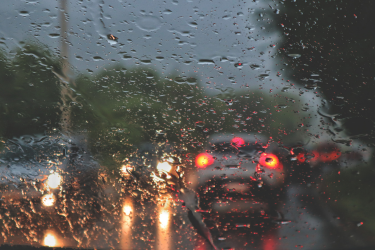Ever driven up the Pacific Motorway and had severe thunderstorms completely clouding your vision? South-East Queensland is no stranger to hazardous weather conditions. The value of preparing for driving in different weather scenarios goes beyond just having a comfy trip; it keeps you and your passengers safe. Whether you’re going away to see the snow this winter or somewhere with heavy fog, we have your back with some quick advice on how to prepare. Getting yourself and your car sorted before you set off on your trip will save you money and time and ensure you don’t have any mishaps that result in additional costs. Let’s go!
1. Rain: Rain makes the road slippery, impacts tyre traction and reduces visibility. If you’re visiting somewhere extraordinarily rainy (or you’re going to be driving in muddy conditions on damaged roads) check your tyre type. Visiting your local automat and checking in with a tyre specialist can determine whether your tyres are suitable for travelling in rainy conditions. If you know you’re going to be travelling in those climates regularly (e.g for work, or if you’ve moved) it’s actually in your favour to invest in suitable tyres rather than deal with steep mechanic bills.
2. Fog: Fog can reduce visibility to near zero, so using your low-beam headlights is important. Avoid using high-beam headlights, which can reflect off the fog and worsen visibility. Use your weather app to be aware of fog alerts which are updated consistently, and plan your departure around that if you can. If you get stuck in fog conditions, stop where it is safe to do so. Do not turn your low-beam headlights off, as they put you at risk of being hit by other vehicles.
3. Wind: Strong winds can make it difficult to control your vehicle, especially if you’re driving a large vehicle like a truck or RV. If so, plan with a route of various truck stops or servos that provide ample safe spaces for large vehicles. If you’re travelling down highways there are often loads of these every few kilometres.
4. Heat: Heat can cause fatigue and make it difficult to focus on the road. Stay hydrated and take breaks if you start to feel tired. Also, be aware of the potential for thunderstorms and flash floods in hot weather. There are lots of 15-minute nap spaces that are demarcated specifically for drivers to safely pull over and regenerate energy on a long trip. In hot conditions, remember to eat as your body is working harder to stay cool and therefore burning through more energy.
5. Flooding: Living in a state prone to intense flooding, you might have experienced car damage such as compromised electrical systems, moulded seats, waterlogged upholstery, or engine failure. If you encounter flooding conditions and are in your car, take preventative measures – start by ensuring that you switch off your car (this preempts any electrical failures) and tow your car to a safe spot, if possible. Contact Roadside Assist, and disconnect the car battery. Don’t drive your car; the engine, steering and braking systems may fail with the water damage. To prevent flood damage, try to have an emergency action plan in place: park your car at a higher vantage point, protect your interiors by having a cleaning kit for mould damage and buy a replacement battery to use in case yours gets water damaged.
6. Severe thunderstorms: To protect your car from severe rain and thunderstorms, consider where your car is being kept. Ensure there are no dangling tree branches hanging over your parked car. If you know there will be dangerous thunderstorms, ensure you trim any overhanging branches in advance to prevent damage to your windshield or the roof of your car. If possible, park your car inside. If you get caught unexpectedly in a thunderstorm, decrease your speed, turn on your headlights and drive slowly to the closest undercover space you can find; try covered car parks or petrol stations.
7. Hail storms: Hail can shatter your windshield and dent the panelling on your car. As it often happens with little notice, it’s important to have an action plan in place. You can purchase hail covers from automats, although they can be a little expensive, so another alternative could be to use some heavy blankets that you don’t require and tie them down over your car with an industrial cord – keep them either in your car or garage, specifically for the purpose of hail protection. If you get caught in a hailstorm while driving, ensure you pull over when and where it is safe – do not park your car underneath power lines, trees, slippery road patches or near water sources.
8. Humid conditions (moulds car seats etc): We’ve all experienced that horrible feeling of closing your car in the garage, crossing our fingers that it will be safe from moisture and then finding all your upholstery riddled with mould. To prevent seats, particularly leather, from the wrath of humid weather, double-check that any garage doors or windows are sealed. You can purchase textural sealers to ensure no humid air escapes through gaps under doors or windows. Consider investing in a dehumidifier, which can purify the air in your garage. If you get mould in your car, you can try scrubbing it with a sudsy cloth (dry thoroughly, though, as water creates more potential growth for the mould), using suitable products for cleaning your leather and upholstery. Be careful using any chemicals or acidic ingredients (natural or otherwise), as you do not want to damage your car interior further.
By following these safe-driving tips, you can reduce the risk of an accident and stay safe on the road, regardless of the weather conditions. Always keep an eye on the weather forecast before heading out on the road, and be prepared for any unexpected changes during your journey.


